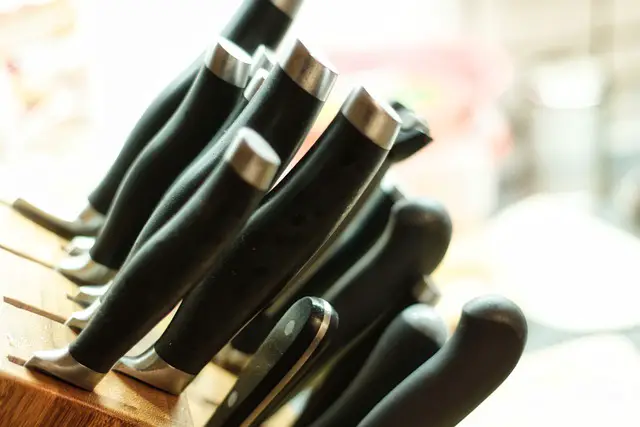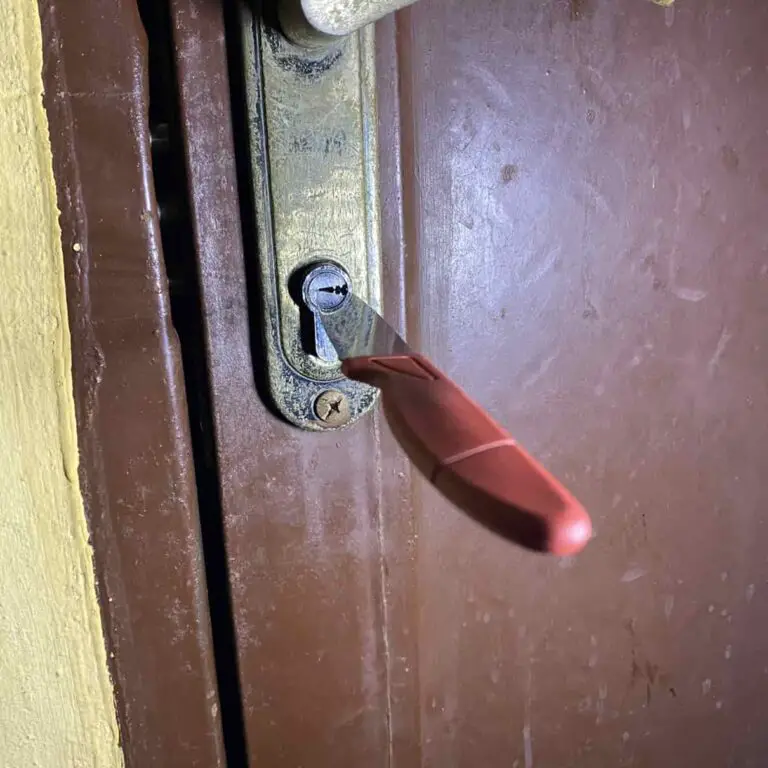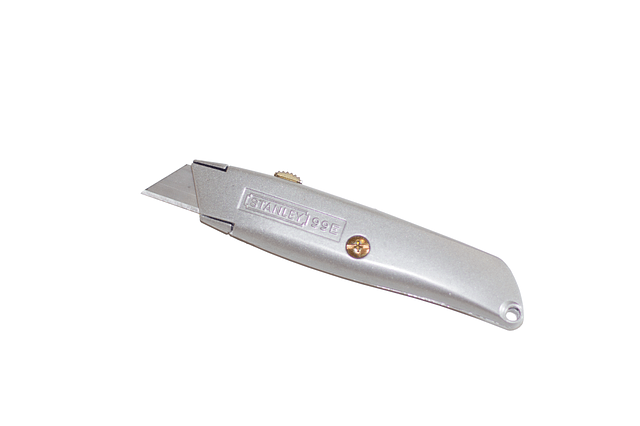Back when I discussed the various knife storage and maintenance tips that I would use to keep single knives and a collection of them, knife blocks were one of the options.
However, there is also the concern of how sanitary knife blocks can be and whether or not you should keep using them.
So, are knife blocks sanitary or unsanitary?
Knife blocks can hold a huge amount of bacterial when they have been used for a long time without cleaning. This is due to the accumulation of moisture and dust/ dirt, infestation of small insects, improper washing of the knife which leads to bacteria growth on the knife blade and inside of the knife block, etc.
Thus, the knife block is only as sanitary as you make it.
Table of Contents
How Does Your Knife Block Gather Bacteria?
The deep, inner crevices of the knife block are places that we usually do not think about that much.
When you sweep the kitchen/other rooms where the knife blocks are in, the dust flies everywhere and might settle inside of your knife block also.
Besides atmospheric moisture, there are also several other ways that moisture can get into these knife blocks.
The fact that most of these knife blocks are made of wood doesn’t help matters either. Expose wood to moisture and you’ll start seeing the formation of mold and mildew in little time.
Knowing that the inside of your knife block is not exposed to better aeration means that the moisture does not dry as fast as you would have wanted.
Everything here contributes to the build-up of germs and bacteria in the knife block.
Now, every time you put your knife back into the block, you are contaminating it with some of the bacteria that is building up in the knife block already. I don’t need to be the one to tell you how serious that is for your food making.
Cleaning Your Knife Block the Right Way
Trust me, it is hard to give up a knife block.
If you have been used to this method of storing your knife for a while now, you might also find it hard to go for another storage method.
For those who would like to keep the knife block, the least that you can do is clean it monthly – at the very least.
That’s what I discuss in this section.
Step #1 – Remove the Crumbs
Take out all the knives in the knife block and set them down on a safe surface. Your kitchen countertop is a nice place for this.
Turn the knife block upside down and gently shake it. The aim here is to get rid of all the solid debris that might have collected in the knife block over time.
Alternatively, you can use a vacuum to suck out all of the debris in the knife block. I would not advise industrial-grade vacuums here as they might be too heavy-duty for the block.
Step #2 – Cleaning the Insides
Here, you’ll need a brush that is slender enough to get into the holes and crevices of the knife block.
Either you get a standard baby bottle nipple brush or create a homemade solution for yourself.
Speaking of homemade solutions, I think you could record much success with a slender stick setup with some foam around it. Otherwise, you can also use any other thing around the home that works well for this purpose.
With your preferred tool, reach into the insides of the knife block and scrub as far as you can. It helps to soak the cleaning tool into some dishwashing liquid for a better guarantee of effective cleaning.
Step #3 – Rinse the Block
I’m assuming that you used some dishwashing soap – or other kinds of mild soaps that work just as well too.
Using warm water, rinse off the inside of the knife block. I would prefer if you could run your tap into the knife block at this temperature, but manual pouring works otherwise also.
Get the water in there and turn the knife block over to get all of the water out.
Step #4 – Drying the Knife Block
This is just as important as the other steps in this list.
If the knife block does not dry well enough, mildew forms.
You can put the block in a well-aerated place to dry, or place it outside (possibly on a sunny day).
Depending on the kind of wood that the knife block is made from, it might warp. So, don’t expose it to direct sunlight.
Knife Block Alternatives to Explore
In the knife storage and maintenance piece, I discussed multiple other methods of keeping your kitchen knives safe. Make sure to check it out here if you’re thinking about ditching your knife block or you’re simply interested in other suitable storage options.
From knife carriage bags to magnetic strips, I’m confident that you’ll find something you love in there.








